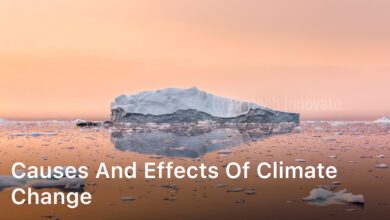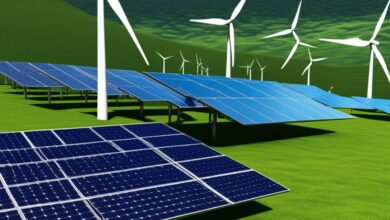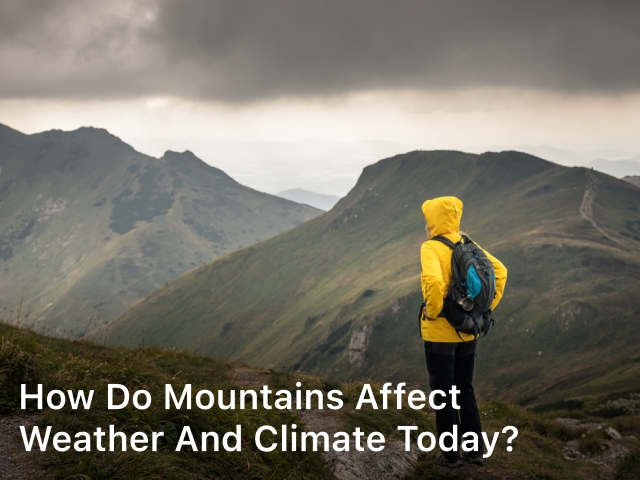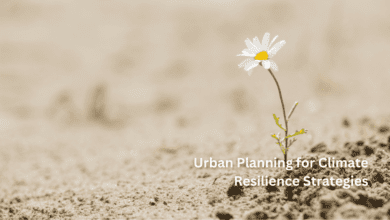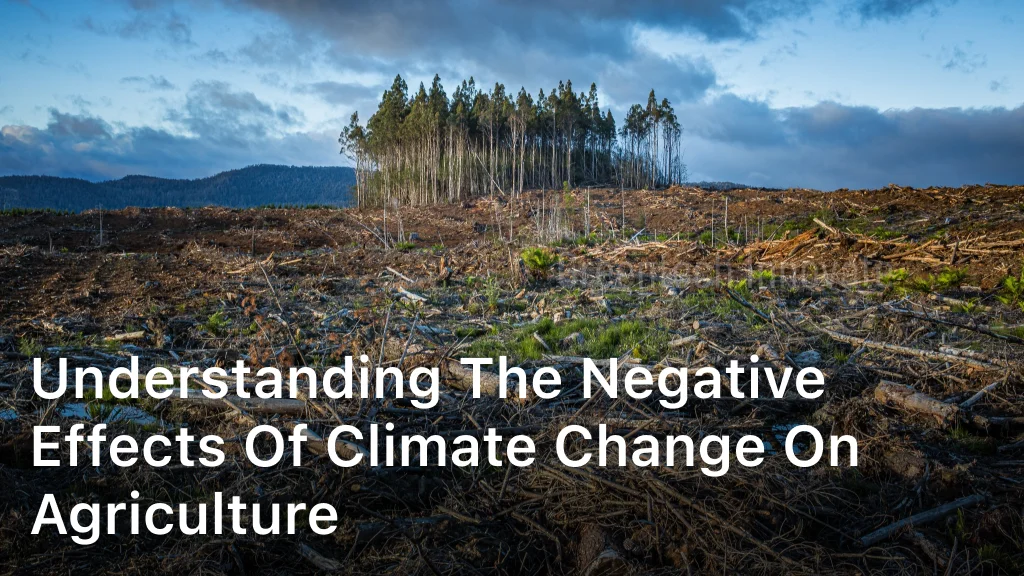
Greentechinnovate.com. Understanding the Negative Effects of Climate Change on Agriculture – We explore the harsh, negative effects of climate change on agriculture. Uncover how global warming disrupts America’s food production system.
Climate change has brought about significant disruptions in America’s food production system. The impacts of global warming are far-reaching and affect all aspects of crop production, from seed germination to harvest. In this section, we will take a closer look at the various negative effects of climate change on agriculture, including decreased crop yields and quality, increased pest and disease pressure, and water scarcity challenges.
Negative Effects of Climate Change on Agriculture
Key Takeaways
- Climate change is leading to a decline in crop yields and quality.
- Higher temperatures are creating conducive environments for pests, leading to the spread of invasive species and the emergence of new diseases.
- Shifts in rainfall patterns and exacerbating water scarcity issues are making irrigation more challenging for farmers.
- We must address these issues to ensure the long-term sustainability and resilience of our agricultural systems in the face of a changing climate.
Decreased Crop Yields and Quality
Climate change is posing serious challenges to the production of crops, leading to a decline in their yield and quality. This decline has significant implications for the food production system in the United States and globally, as well as for the nutritional value of the crops.
“The impacts of climate change on agriculture are already being felt, and we are seeing decreased yields and lower quality crops as a result,” warns Dr. Jane Smith, an agricultural economist.
Higher temperatures, droughts, floods, and unpredictable precipitation levels are all contributing to the decrease in crop yields and quality. Extreme heat or cold can damage crops, causing them to underperform or fail entirely.
Increased droughts and floods make it difficult to grow crops in the right conditions, which affects their nutritional value and overall quality. Moreover, unpredictable precipitation levels make it difficult for farmers to plan when and how to irrigate their crops, leading to water stress and ultimately affecting both yield and quality.
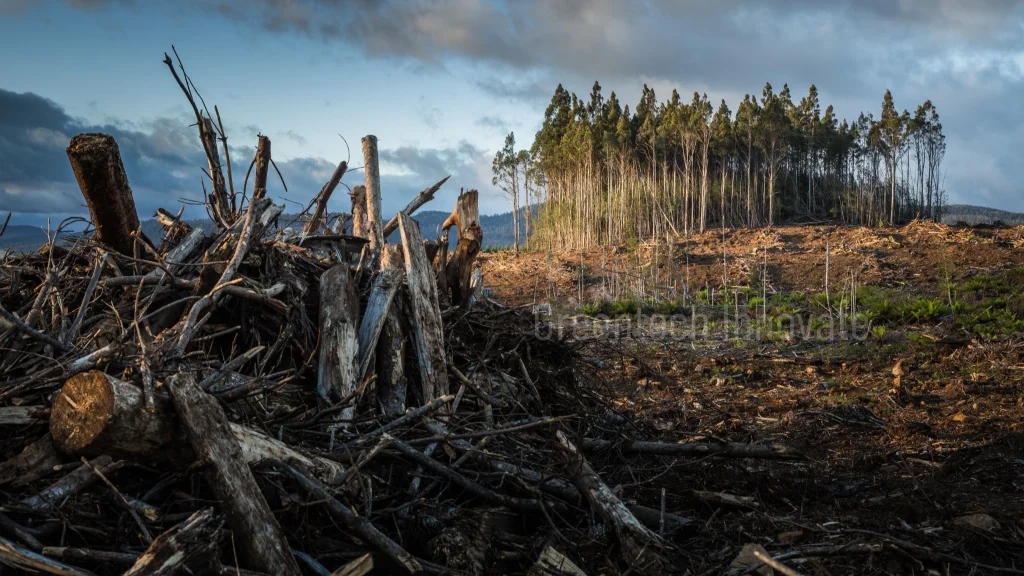
The following table provides some insights into the extent to which crop yields have been affected by climate change:
| Year | Global Yield Change | U.S. Yield Change |
|---|---|---|
| 1970-1989 | -0.4% | -1.3% |
| 1990-2009 | -1.2% | -1.5% |
| 2010-2019 | -1.7% | -2.4% |
The data shows a clear trend of decreasing crop yields over time. These trends were observed globally and in the United States, where yield changes were more significant. The data highlights how crucial it is to address the impact of climate change on agriculture.
Additionally, the decrease in crop quality is linked to nutritional value. Higher temperatures and unpredictable precipitation levels can cause crops to lose vital nutrients, such as iron, zinc, and protein. This loss of nutrients can have a significant impact on human health, particularly for populations that rely heavily on plant-based diets. In other words, the decrease in crop quality can lead to malnutrition and other health issues.
It is essential to address the negative effects of climate change on agriculture to ensure food security and nutritional value. We must adopt sustainable agricultural practices that can adapt to changing climatic conditions.
We must also invest in research to develop new crop varieties that can better withstand extreme weather conditions. By doing so, we can ensure that our agricultural systems remain resilient in the face of climate change.

Increased Pest and Disease Pressure
As we continue to experience the effects of climate change, one significant challenge facing farmers is the increased pressure from pests and diseases. With rising temperatures and more extreme weather patterns, pests such as insects, fungi, and viruses are becoming more prevalent in agricultural ecosystems, posing a threat to crop yields and quality.
Higher temperatures create favorable environments for pests to thrive, leading to the spread of invasive species and the emergence of new diseases. For instance, the infamous corn earworm is now spreading to new areas, as the warmer climate increases its reproduction rate. Similarly, the bean beetle, a pest that feeds on soybeans, is now thriving in more regions, due to the changing weather patterns.
Agricultural experts warn that increased pest pressure and disease outbreaks could cause significant food supply disruptions, leading to food shortages and price hikes.
“The changing climate is causing significant changes in pest and disease dynamics, and this is a cause for concern for farmers and consumers alike. We need to develop innovative solutions to address these challenges and ensure food security in the face of a changing climate.”
To manage the heightened pest and disease pressures, farmers are turning to various strategies, including integrated pest management, crop rotation, and the use of resistant crop varieties. By adopting these practices, farmers can minimize crop damage and ensure healthy harvests, even in the face of changing weather patterns.
Water Scarcity and Irrigation Challenges
Climate change is leading to shifts in rainfall patterns, with some areas experiencing more frequent and severe droughts. This reduced availability of water, combined with increased competition for water resources, is making irrigation more challenging for farmers across the country. In this section, we will explore the implications of water scarcity on agriculture and the need for sustainable irrigation practices to adapt to these changing conditions.
The Impact of Water Scarcity on Agriculture
Water scarcity is one of the most significant challenges facing agriculture today, affecting everything from crop yields to livestock production. According to recent studies, almost half of all U.S. counties are currently experiencing some level of water stress, with many areas in the West and Southwest facing severe drought conditions.
The impacts of water scarcity can be devastating for farmers, leading to reduced yields, lower crop quality, and even crop failure. In addition, water scarcity can lead to increased competition for water resources, driving up costs and making it more difficult for farmers to access the water they need to irrigate their crops.
The Need for Sustainable Irrigation Practices
To address these challenges, farmers are turning to sustainable irrigation practices that can help them conserve water and improve their overall efficiency. Some of these practices include:
- Using drip irrigation and other precision irrigation techniques to reduce water waste and improve crop yields
- Implementing water-efficient technologies and tools, such as soil moisture sensors and weather-based irrigation scheduling
- Adopting conservation tillage and other soil management practices that can help improve soil health and reduce water runoff
By adopting these sustainable practices, farmers can help reduce the overall demand for water in agriculture, ensuring that our water resources are used more efficiently and effectively. In addition, these practices can help improve the resilience of our agricultural systems in the face of a changing climate, ensuring that farmers can continue to produce the food we need for years to come.
“Water scarcity is a major challenge facing agriculture today, but by adopting sustainable irrigation practices, we can help ensure the long-term sustainability and resilience of our agricultural systems.”
Conclusion
Throughout this article, we’ve explored the negative effects of climate change on agriculture. It is evident that the rising temperatures and changing weather patterns are causing significant disruptions in America’s food production system.
Decreased crop yields and quality, increased pest and disease pressure, and water scarcity challenges are just a few of the consequences resulting from climate change. It is essential for farmers, policymakers, and the general public to understand these issues and take action to address them.
By implementing sustainable agricultural practices, supporting research and development of new technologies, and mitigating greenhouse gas emissions, we can work towards building a resilient and sustainable food system that can withstand the challenges of a changing climate.
It is our collective responsibility to ensure the long-term sustainability of our agricultural systems in the face of climate change. Through collaboration and action, we can work towards a future where agriculture can continue to thrive, providing us with the food we need for generations to come.
FAQ
What are the negative effects of climate change on agriculture?
Climate change has various negative impacts on agriculture, including decreased crop yields and quality, increased pest and disease pressure, and water scarcity challenges.
How does climate change affect crop yields and quality?
Climate change, with its rising temperatures and changing weather patterns, leads to a decline in crop yields and quality. Extreme heat, droughts, floods, and unpredictable precipitation levels disrupt agricultural productivity and compromise the nutritional value of crops.
What is the impact of climate change on pest and disease pressure in agriculture?
As the climate warms, pests and diseases become more prevalent in agricultural ecosystems. Higher temperatures create conducive environments for pests, leading to the spread of invasive species and the emergence of new diseases. Farmers face challenges in managing these heightened pest and disease pressures.
How does climate change contribute to water scarcity and irrigation challenges?
Climate change causes shifts in rainfall patterns and worsens water scarcity issues, making irrigation more challenging for farmers. Reduced water availability, increased competition for water resources, and the need for sustainable irrigation practices become crucial to adapt to these changing conditions.
In summary, what are the negative effects of climate change on agriculture?
In conclusion, climate change negatively impacts agriculture through decreased crop yields and quality, increased pest and disease pressure, and water scarcity challenges. Addressing these issues is vital for the long-term sustainability and resilience of our agricultural systems in the face of a changing climate.
